06 December 2017 by Chris Cathrine | Comments: 0
Share this article:

Although Director Chris Cathrine published an article on the implications of Brexit for Devolved Environmental Law in Scotland just three months ago, a lot has moved on since (read the blog on the original article here). Using responses received from UK Government and Scottish Government officials, as well as newly published documents, Chris authored an update article which has been published in the latest issue of Chartered Institute of Ecology and Environmental Management (CIEEM) In Practice. This new article adds clarity to the future of environmental law in Scotland, however there remains much uncertainty, particularly as UK Government responses to queries relating specifically to devolved law made reference to policy which only applies to England. The new article can be downloaded from the Caledonian Conservation publications page.
The politics of Brexit continue at a rapid pace, and since this article was written the UK Parliament has voted on a number of amendments to the EU Withdrawal Bill (formerly known as ‘the Great Repeal Bill’) relating to both the future of environmental law and devolution. Of particular note are the votes which rejected New Clause 67 and the amendments to Clause 11, the implications of which are summarised below:
Unfortunately, these developments since writing the update article have failed to add further clarity to devolved environmental law after Brexit, and instead have increased uncertainty.
16 November 2017 by Chris Cathrine | Comments: 0
Share this article:
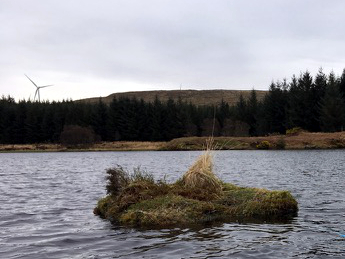
Caledonian Conservation has been working to satisfy ecology planning conditions for RES at Freasdail Wind Farm in Kintyre since 2014, involving developing and delivering mitigation for a range of birds, mammals, reptiles and habitats, as well as providing Ecological Clerk of Works (ECoW) services. The final step in this process was the deployment of nest rafts to encourage red-throated divers – rare birds protected under Schedule 1 of the Wildlife and Countryside Act 1981 (as amended in Scotland) – to breed.
Red-throated divers spend winter at sea, and return to breeding territories (usually small lochans in open moorland) in spring. The nest consists of a small scrape, normally located at the water’s edge, or on an island. As nests are often located within easy access of predators such as foxes, otters and gulls, disturbance and predation can cause breeding failure. Nests are also vulnerable to flooding during incubation – an increasingly common problem as summers become wetter as a result of climate change.
Artificial nest rafts have been found to greatly improve the success of breeding divers. These rafts are not susceptible to flooding, as they adjust automatically with the water level, and also limit access to land-based predators.
To avoid disturbance, nest rafts were installed after the major elements of construction were complete. Locations for rafts were carefully chosen to avoid risk of collision with wind turbines while red-throated divers commute between nesting lochans and feeding habitat (the sea and larger waterbodies), and to ensure there would be no human-caused disturbance during operational maintenance activities.
Working with Simon Lawrence (Lawrence Environmental Consultants), the nest rafts were successfully installed by Caledonian Conservation in April 2017, and will hopefully improve the breeding success of red-throated divers in the area in future years.
Read more about RES at: http://www.res-group.com/en
Read more about Freasdail Wind Farm at: http://www.freasdail-windfarm.co.uk/
Photo: Diver nest raft installed near Freasdail Wind Farm © Simon Lawrence
15 November 2017 by Chris Cathrine | Comments: 0
Share this article:
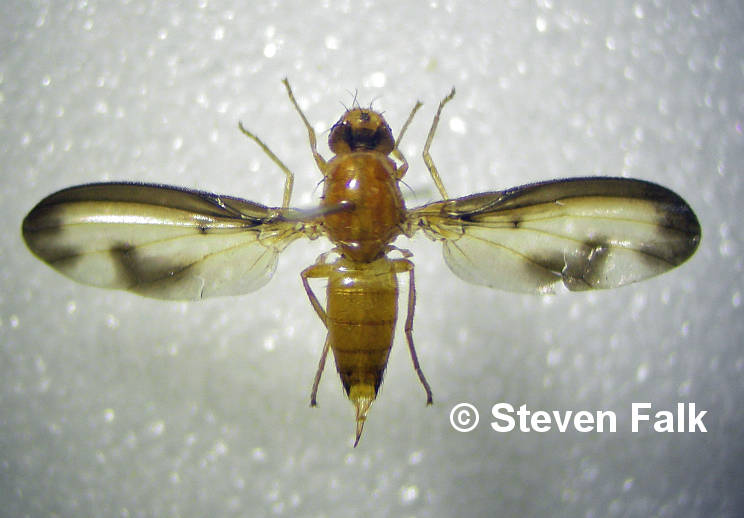
A rare flutter-wing fly, Palloptera laetabilis, not seen in the UK for over 100 years has been found at Den of Airlie Site of Special Scientific Interest (SSSI), a woodland in Angus. This is also the first time this fly has ever been found in Scotland.
The rare fly was presumed to be extinct, but was found during site condition monitoring surveys completed by Caledonian Conservation under contract to Scottish Natural Heritage (SNH) in 2015. The discovery has since been confirmed and published by Steven Falk (the fly expert on the project team) in the most recent issue of Dipterists Digest.
Den of Airlie SSSI is only the fifth site that this species has been recorded at in the UK, and the only one in Scotland. The other four sites are all located in England, with the last record being from Oxfordshire in 1907.
Chris Cathrine, Director of Caledonian Conservation and project leader for the 2015 invertebrate site condition monitoring project said: “Finding a species last recorded over a century ago is very exciting. That this is also the first record for the species in Scotland makes this all the more special. We found a great number of rare species during our surveys across Scotland. While Palloptera laetabilis is undoubtedly the most exciting, we hope to publish records from all 25 sites, including the Isle of Rum, in the future.”
The invertebrate records collected by Caledonian Conservation during these surveys (including Den of Airlie SSSI) are available on NBN Atlas at: https://registry.nbnatlas.org/public/show/dp4
Learn more about SNH’s work in Scotland at: http://www.snh.gov.uk/
Steven Falk’s paper on Palloptera laetabilis is available on the Caledonian Conservation publications page, or directly here.
Steven Falk was contracted by Caledonian Conservation to complete surveys for this project through his previous role at Buglife – the Invertebrate Conservation Trust. For more information on Steven Falk’s work and photography, please visit: http://www.stevenfalk.co.uk/
For more information about the Dipterists Digest visit: http://www.dipteristsforum.org.uk/sgb_dipterists_digest.php
Photo: Female Palloptera laetabilis from Den of Airlie Site of Special Scientific Interest (SSSI) © Steven Falk
03 November 2017 by Chris Cathrine | Comments: 0
Share this article:

The winners of the Amazing Animals, Brilliant Science competition have been presented with their awards at Edinburgh Zoo, including Caledonian Conservation beanie hats!
Young artists and writers from across Scotland attended the event on 21st October, organised by the Amphibian and Reptile Conservation (ARC) Trust and hosted by the Royal Zoological Society of Scotland (RZSS). Children aged 8-18 were asked to paint, draw or write about 15 iconic Scottish species, ranging from Scottish wildcats and red deer to great crested newts. According to ARC's patron and TV presenter Chris Packham: "There are some very striking, imaginative and colourful artworks... and some tremendous essays describing these wonderful animals."
Caledonian Conservation were proud to sponsor the event, with Director Chris Cathrine saying: “Young people are losing their connection to the natural world. If people don’t care about wildlife, they won’t want to protect it. It is therefore essential to ensure that the next generation have the opportunity to explore and share in the wonder of Scotland’s wildlife. It’s an honour and a privilege to help young people build their connection with nature. Who knows, maybe some of the winners will go on to become the ecologists of the future.”
The creative work done by the children will now be used to help illustrate a new book called "Amazing Animals, Brilliant Science: how DNA technology is being used to help save Scotland's wildlife". The book is being compiled by Dr Pete Minting of ARC.
The Amazing Animals, Brilliant Science competition is part of ARC's Great Crested Newt Detectives project in Scotland, which started in April 2016 and runs until March 2018, funded by the Heritage Lottery Fund (HLF), Scottish Natural Heritage (SNH), the Royal Zoological Society of Scotland (RZSS) and ARC.
To read more about Amazing Animals, Brilliant Science go to this website: www.arc-trust.org/news/amazing-animals-brilliant-science
You can learn more about Amphibian and Reptile Conservation Trust here: www.arc-trust.org
The photo was provided by Pete Minting (ARC) and is used with permission.
02 November 2017 by Chris Cathrine | Comments: 0
Share this article:

Caledonian Conservation Ltd is proud to sponsor the Tay Landscape Partnership Buildings for Biodiversity Conference, to be held at Perth Concert Hall on 9th November. As people expand urban environments and develop new areas for natural resources such as renewable energy, it is becoming increasingly clear that segregation of wildlife and development is not realistic; instead, we need to ensure biodiversity benefits are integrated in to these projects. This conference therefore tackles an important and very current topic.
While developments offer obvious challenges for wildlife, there are many opportunities to benefit biodiversity. Tay Landscape Partnership pioneered a landscape scale approach to identifying these opportunities with their Buildings for Biodiversity and Tay to Braes projects, which we are proud to have contributed to at Caledonian Conservation Ltd.
The conference programme is wide ranging, covering wildlife law and development, mitigation and enhancement for species, or broader biodiversity opportunities such as green roofs. The speakers are from an equally diverse range of organisations, including Gaia Research, Swift Conservation, Police Scotland, and Arc Architects Ltd. Pioneering and inspirational urban ecologist Dusty Gedge will also be giving a talk on Nature-‘based Solutions in the Urban Real.’
As well as the main presentations, there will also be a series of shorter talks including one by Caledonian Conservation Ltd Director Chris Cathrine, as well as Butterfly Conservation Scotland, Inchture Parish Church, Hillcrest Housing Association, Bat Conservation Trust, and the local Amphibian and Reptile Group.
For more information on the event, visit the The Tay Landscape Partnership Buildings for Biodiversity Conference website.
For more information on the landscape scale biodiversity work Caledonian Conservation Ltd completed for Tay Landscape Partnership’s Buildings for Biodiversity and Tay to Braes projects, download the report from our publications page, or directly here: Cathrine, C., Flood, E., Norris, G. and Johnston, S. 2015. Tay Landscape Partnership: Habitats and Buildings Survey. Caledonian Conservation Ltd, Hamilton.
05 September 2017 by Chris Cathrine | Comments: 0
Share this article:
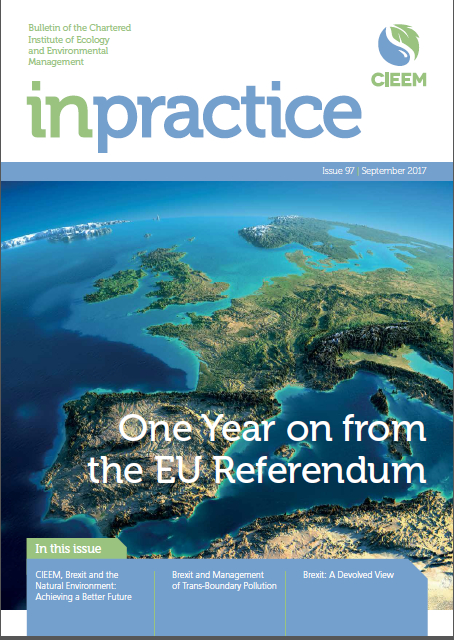
At present, environmental law is devolved in Scotland. As such the responsibility for Scottish environmental law (including wildlife protection) rests with Scottish Government. The European Union (EU) directives provide a framework for elements of environmental law, common to all UK nations and the other 27 member states. As the UK leaves the EU, these frameworks will no longer apply in Scotland, and this, combined with other implications on the devolution settlement, bring a high level of uncertainty for the future structure of environmental law. The potential implications of Brexit for devolved environmental law in Scotland was the subject of an article by Caledonian Conservation’s Director, Chris Cathrine, in the Chartered Institute of Ecology and Environmental Management (CIEEM) In Practice publication. This article is now available to download from the Caledonian Conservation publications page.
Note that the deadline for this article was before the snap 2017 General Election, and some of the areas of uncertainty are now becoming clearer – for example the background briefing notes for the Queen’s Speech indicate the intention of creating a UK-wide legislative framework for environmental law post-Brexit through the Agriculture Bill. Therefore, an update will be appropriate as further clarifications are provided.
23 August 2017 by Chris Cathrine | Comments: 0
Share this article:
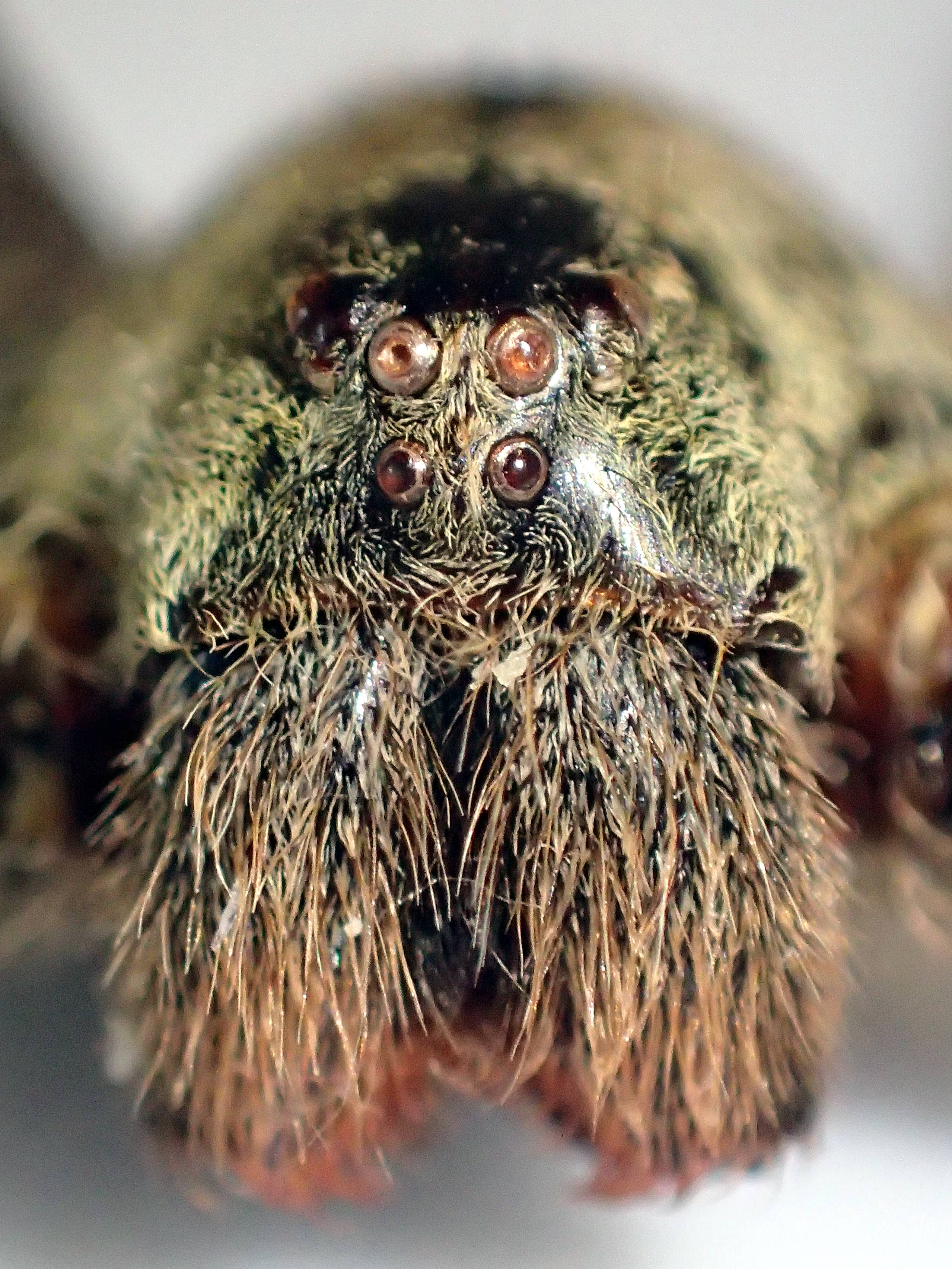
Caledonian Conservation’s Director, Chris Cathrine, co-authored an article with Stuart Longhorn for The Newsletter of the British Arachnological Society describing a specimen of Phoneutria (P. cf. boliviensis) which was found in Inverbervie (Aberdeenshire) in a banana shipment from Colombia in 2016. SRUC later sent the spider to Caledonian Conservation for identification.
The article was published on 14th August 2017, and provides information on the record, as well as photos and a diagram of the epigyne (female genitals, unique to the species of spider).
With relatively little information published on the identification of Phoneutria (known as ‘wandering spiders’ and belonging to the family Ctenidae, which does not occur naturally in the UK), there was an opportunity to share useful identification details with ecologists working throughout the world. We are proud that the article was quickly added to the World Spider Catalogue – a resource that collates key taxonomic literature on spiders, for use by academic researchers and other ecologists throughout the world.
Despite frequent media reports claiming Phoneutria spiders (sometimes erroneously referred to by the press as ‘painful erection death spiders’) to have been found in the UK and often indicating they are associated with damaging bites to people, there are no previous records published in scientific literature. These reports are rarely substantiated, and the specimens are not normally identified by expert arachnologists. Given the claims of medically important bites, Chris and Stuart felt it would be helpful to describe the effects of the venom of different Phoneutria species based on peer reviewed literature in the article.
It is hoped that this article will help inform a more robust understanding of the occurrence of Phoneutria spiders in the UK, help others identify these species, and be a useful reference source for journalists reporting on wandering spiders in the future.
The article is available to download on the Caledonian Conservation publications page and the World Spider Catalogue.
Learn more about the British Arachnological Society here.
The World Spider Catalogue is hosted by the Natural History Museum of Bern, and more information can be found here.
29 June 2017 by Chris Cathrine | Comments: 0
Share this article:

All loaded up and ready to go – Chris Cathrine, Director, and Carolyn Gillen, Ecologist form the advance Caledonian Conservation team heading for the 29th GWCT Scottish Game Fair at Scone Palace in Perthshire.
Loaded up with all the components for our trade stand, Chris and Carolyn are in charge of setting everything up ready for the Fair opening on Friday June 30th. If last year is anything to go by, the Fair will play host to over 33,000 visitors for a three day celebration of all that rural Scotland has to offer.
Members of the team will be on hand over the three days to meet friends and clients, old and new and to offer expert ecology advice – or even just a chair for weary legs.
So if you’re coming along, don’t forget to visit the Caledonian Conservation team on Stand 22a Stag Row.
For more information on the Scottish Game Fair, visit: www.scottishfair.com
23 June 2017 by Chris Cathrine | Comments: 0
Share this article:
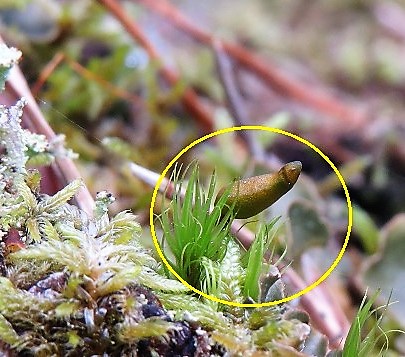
Senior ecologist and company bryologist Julie Smith reports from amongst the fallen trees of the Black Wood of Rannoch.
In January 2017 Caledonian Conservation Ltd undertook a surveillance survey across the Tay Forest District for a rare bryophyte listed under Annex II of the EU Habitats Directive which occurs on deadwood, green shield moss (Buxbaumia viridis). The aim was to survey suitable habitat to improve understanding of the distribution of the species in Scotland.
During a recent Native Woodland Discussion Group (NWDG) meeting a member had noted that there appeared to be a lack of deadwood across the Site of Special Scientific Interest (SSSI) element of Black Wood of Rannoch, one of the largest extents of ancient Caledonian Pine wood in Scotland. While our winter survey there had indeed found limited quantities there was locally frequent deadwood of good size and stage of decay along the Dall Burn and its tributaries to the east. Buxbaumia viridis was not recorded within the SSSI, but it was on neighbouring Forest Enterprise (FE) land, by the Kilvrecht campsite, again to the east.
In spite of the long term use of the Black Wood for timber extraction up until the wartime felling of the 20th century, the ancient pinewood has persisted and is now managed by Forest Enterprise (FE) under non-intervention. It is expected there will be an increase in deadwood across the SSSI in future years, which means more suitable habitat for Buxbaumia viridis. FE staff and other visitors to the woodland should be encouraged to familiarise themselves with this distinctive little moss and its preferred microhabitat, as it may very well turn up there soon!
At the end of the NWDG meeting Julie revisited the mature fallen Kilvrecht birch tree where the moss was found and became reacquainted with the impressive capsules, albeit at a different growth stage!
The photo below shows a Buxbaumia viridis capsule on mature fallen birch tree in early June 2017 (capsules have reached maturity and are golden brown in colour).
21 June 2017 by Chris Cathrine | Comments: 0
Share this article:
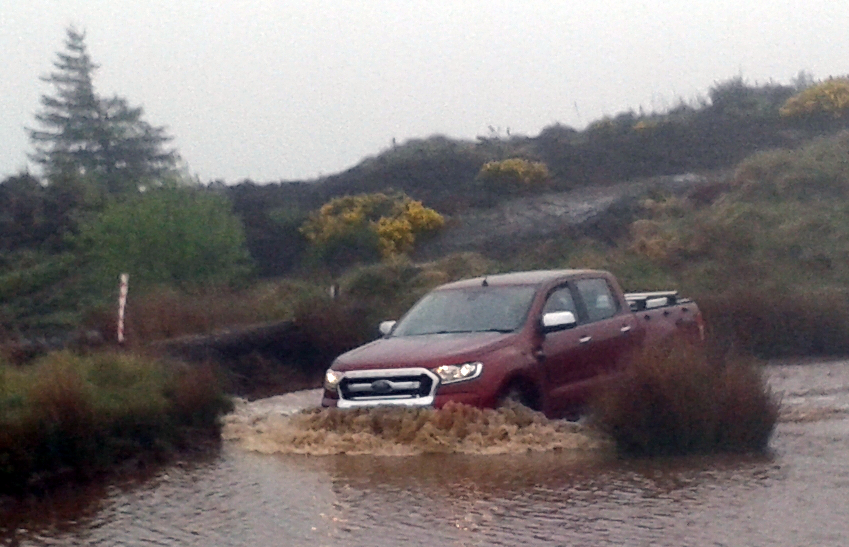
Working in remote locations throughout the UK means the Caledonian Conservation team often encounter rough and challenging terrain – particularly in Scotland! It’s therefore essential that our drivers have the equipment and the skill necessary to tackle this. The driving team are BORDA (British Off Road Driving Association) qualified, and we all recently renewed and updated our 4x4 driving skills and qualifications at the Scottish Off Road Driving Centre in Fife.
Though perhaps not quite as muddy under-tyre as in previous visits due to the recent unusually dry spell the extensive hilly (and watery) course at Glentarkie still put us through our paces as we practised our controlled ascents and descents, stall and loss of traction recoveries, braking and bow wave creation over, in and through the ditches, ridges, ruts, lakes, woods and sideslopes. There was also an opportunity for some inadvertent in-car livestock herding warming up the engine in the sheep field beforehand.
Walter and his team of instructors as ever provided an excellent programme, expertly guiding us through the obstacles of the day and also offering a lot of useful advice on a range of issues from safety checks to be carried out before every excursion through to proper usage of the handbrake when parking.
This also gave us an opportunity to really test the Ford Ranger’s capabilities – learning the limitations and unexpected strengths compared to Land Rover Defenders. Rangers are remarkably capable off road vehicles – we were particularly surprised at how well they out-performed Defenders when cross axled! We’d certainly recommend the Ford Ranger Off Road Pack!
We all emerged unscathed and fully prepared once again for whatever terrain our various projects might take us to next in the wilds of Scotland and beyond.
No Ford Rangers were harmed during the earning of our new BORDA certificates.
To find out more about the British Off Road Driving Association (BORDA) visit: www.borda.org.uk/
To find out more about the Scottish Off Road Driving Centre visit: www.scotoffroad.co.uk/
To find out more about Ford Rangers visit: www.ford.co.uk